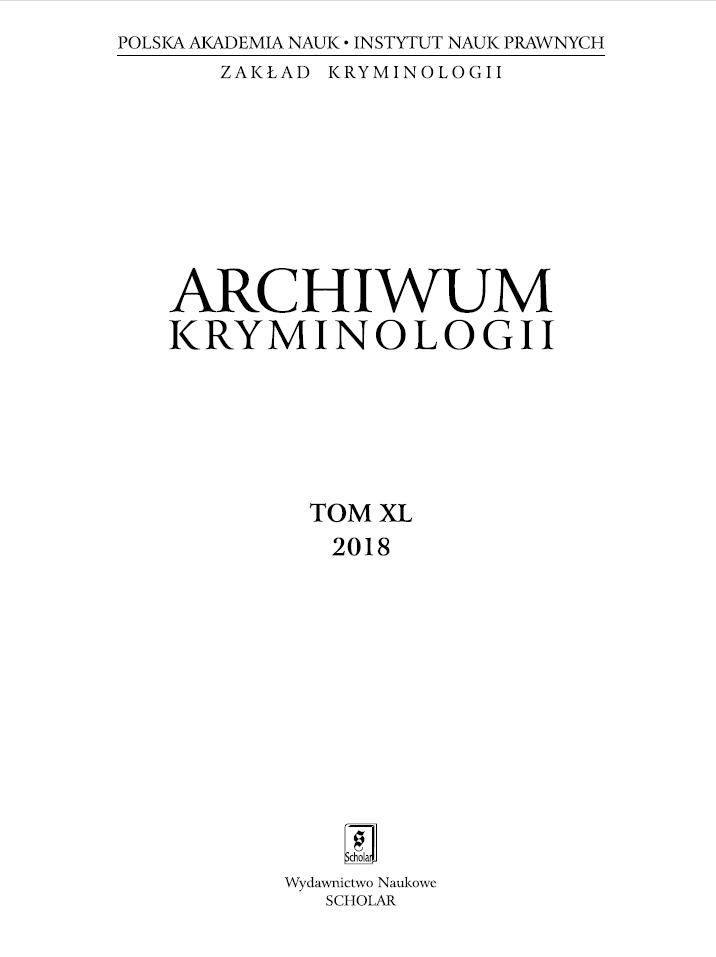Victim-offender Mediation in Poland – The Lay Perspective
Victim-offender Mediation in Poland – The Lay Perspective
Author(s): Anna MatczakSubject(s): Criminal Law, Sociology of Law
Published by: Instytut Nauk Prawnych PAN
Keywords: restorative justice; victim-offender mediation; lay opinion; criminal justice system; apology
Summary/Abstract: Restorative justice is a complex and multi-faceted concept, the introduction of whichdoes not happen in a socio-political and economic vacuum. Every society engageswith restorative justice in its own distinctive way as it is the society – lay people – thatis always on the receiving end of restorative solutions. In this article, I draw on mydoctoral research that explores qualitatively how a small number of Polish peopleunderstand punishment and justice, and how their narratives inform the viabilityof restorative approaches to justice in Poland. In other words, I propose to considera macro-sociological perspective, and how lay people’s understanding of punishmentand justice should be seen as an avenue by which to explore certain preconditions forthe viability of restorative justice.Poland’s socialist past, change of the political regime, post-communist “accession”to the international community in the West and a high level of religiosity (among manyother factors) make Poland a fascinating object of study that can, at the same time,offer insights about restorative justice in other societies. Restorative justice, introducedin the form of victim-offender mediation, was part of the post-1989 political ambitionsto change the Polish penal landscape and join the international community in the West.There were a number of forces behind the establishment of restorative justice in Poland.Given that the concept was introduced at a time when the Polish society was dealingwith the socialist legacy and creating a new democratic reality, it was also hoped thatmediation could serve as a fast-track remedy and act as an ancillary mechanism toreduce the sudden spike in court workloads after the fall of communism. In the caseof Poland, it seems that the exceptionally limited interest in mediation and the paucityof anticipated outcomes of victim-offender mediation is the problem. In order toexplore the viability of restorative justice in the Polish context, one must thereforelook beyond the legal basis and formal logistics which have been already in place formany years.My research opens up new debates on the viability of restorative justice, and thisarticle in particular fleshes out the nature of the participants’ perceptions of victimoffendermediation. In this article, I first briefly introduce the Polish model of victimoffendermediation. I then discuss the nature of the initial responses to mediationbased on the participants’ knowledge of, support for, and any experience of, victimoffendermediation. This is followed by the discussion on how the participants’ viewson mediation were articulated in the shadow of the Polish criminal justice system.Next, I explore why the participants viewed mediation as a business-like encounterand, finally, I explore the participants’ perceptions of apology – something that cameup as one of the most interesting findings of the study.The aim of this paper is to argue that the viability of restorative justice should beapproached as a process that is influenced by broader socio-economic, political andeven linguistic factors. Although the Polish model of victim-offender mediation wasinspired by the restorative justice concept, the narratives of my lay participants suggesta number of socio-cultural obstacles to the further development of restorative justicein Poland. Despite a limited knowledge of victim-offender mediation among the studyparticipants, it is clear that support for mediation is negotiated and conditional.Although victim-offender mediation was mainly perceived not as a punishment, therole and purpose of this practice was discussed against the background of the Polishcriminal justice system. Although the relationship might be defined as “uneasy” (seeShapland et al. 2006), restorative justice, since its conception, has been interwoven withthe two. One of restorative justice’s central hopes was to establish an alternative systemof crime resolution that would eliminate the infliction of pain. However, the trajectoryof restorative justice solutions in many countries demonstrates that the functioningof a majority of them is dependent on criminal justice agencies. Given the close andinseparable relationship between the two, I argue in my research that the ways in whichlay people perceive the criminal justice institutions affect their perceptions of alternativeconflict resolutions. Then, as it emerged in my fieldwork, the study participants’ perceptionof harm suggests that mediation might be seen as an avenue to focus onthe financial side of the reparation, and as result might achieve something other thanrestorative goals. The narratives of my study participants also explore the difficultyof acknowledging apology as a genuine element of the restorative encounter. Thiscould be due to looking at apology through the lens of court apology, sociolinguistic or cultural reasons. John Braithwaite in his book Restorative Justice and ResponsiveRegulation (2002) rightly indicated that “we are still learning how to do restorativejustice well” (p. 565). Nevertheless, the question whether a perfect restorative justiceprogramme is ever possible remains open.
Journal: Archiwum Kryminologii
- Issue Year: 2018
- Issue No: XL
- Page Range: 495-522
- Page Count: 28
- Language: Polish

